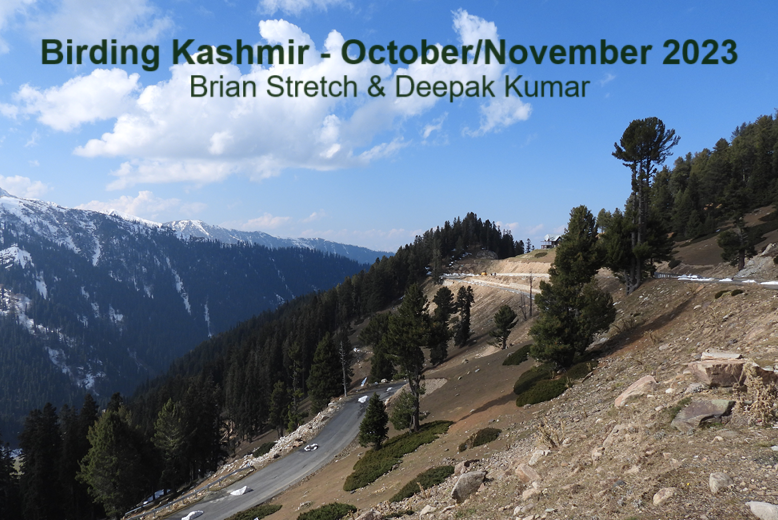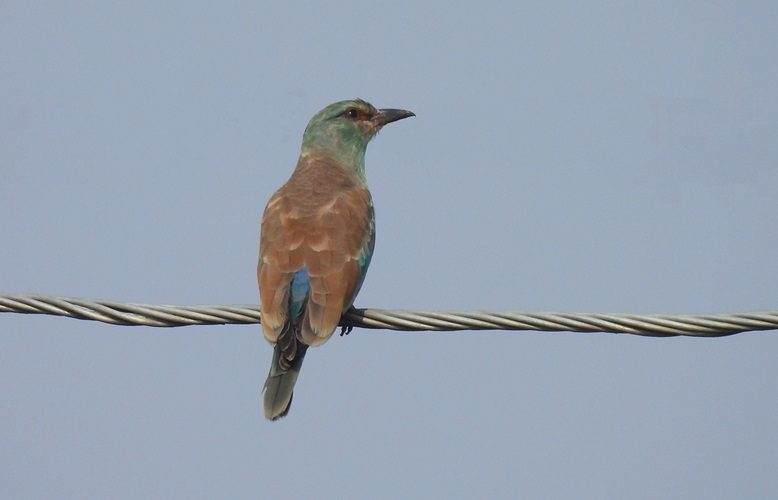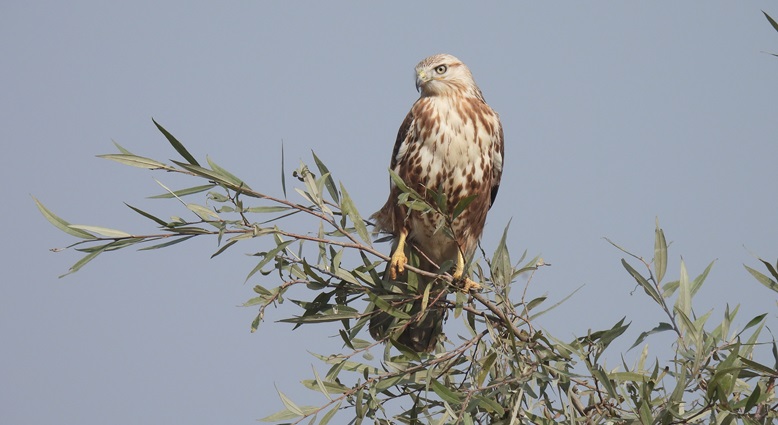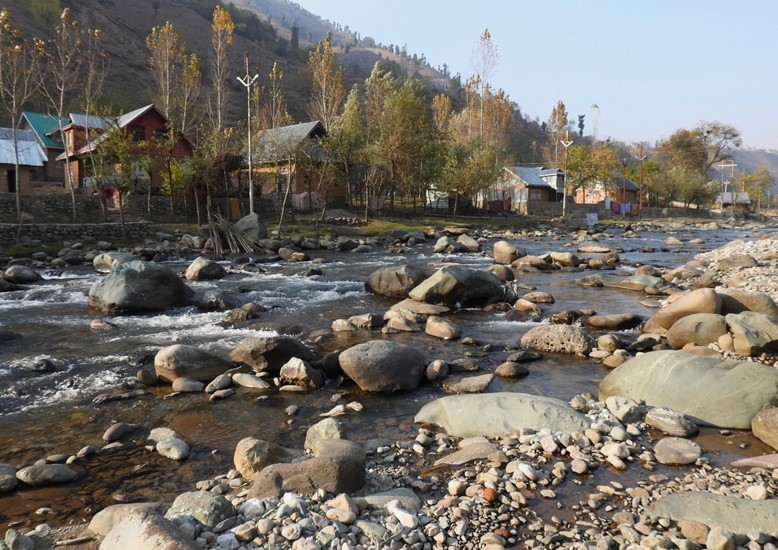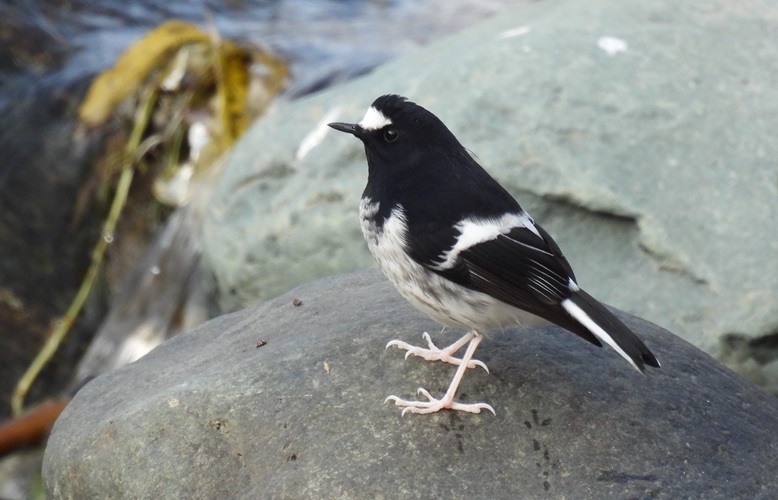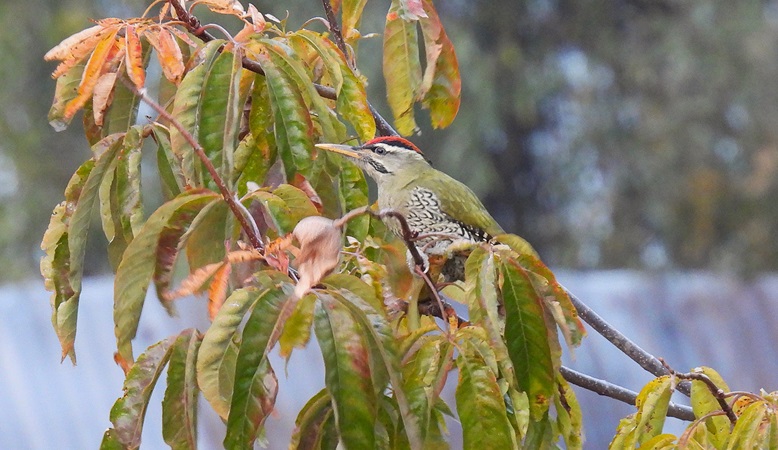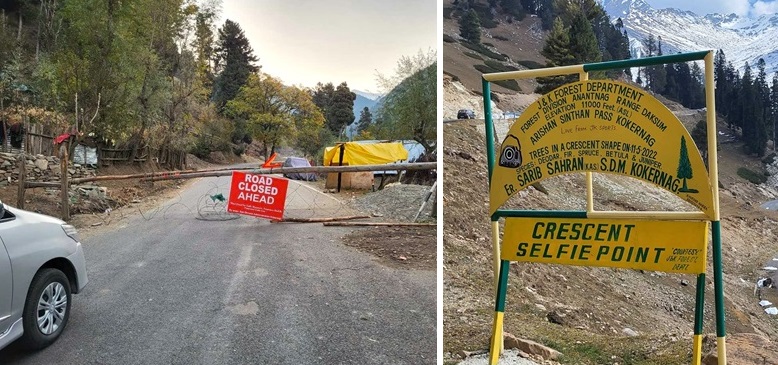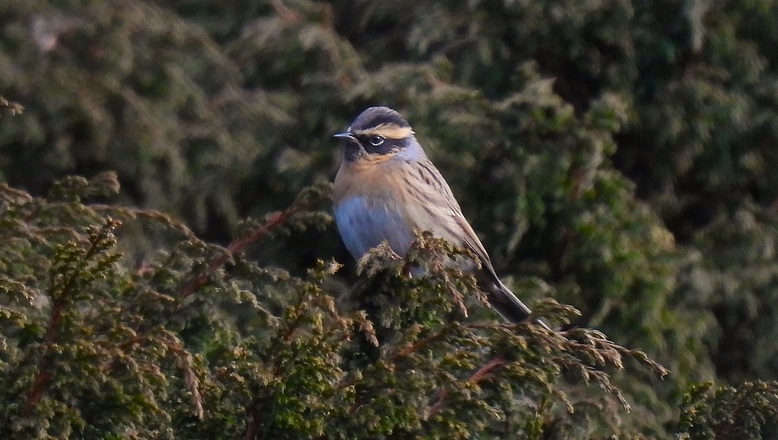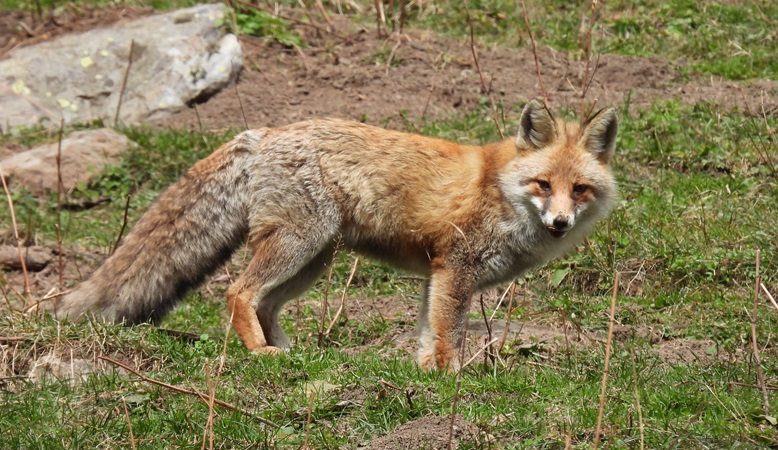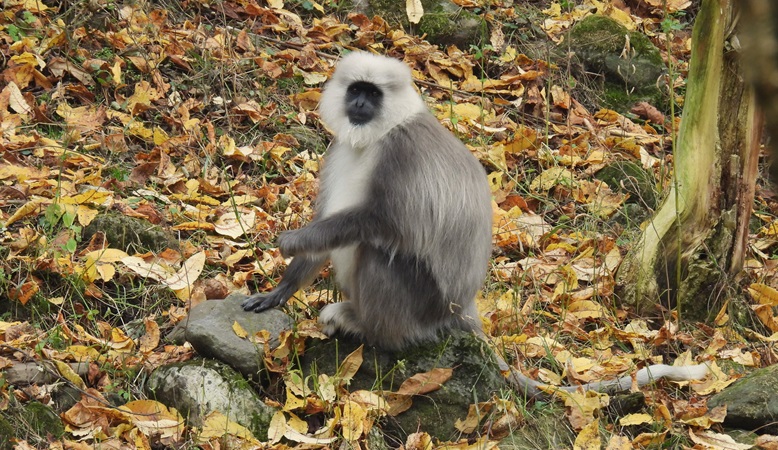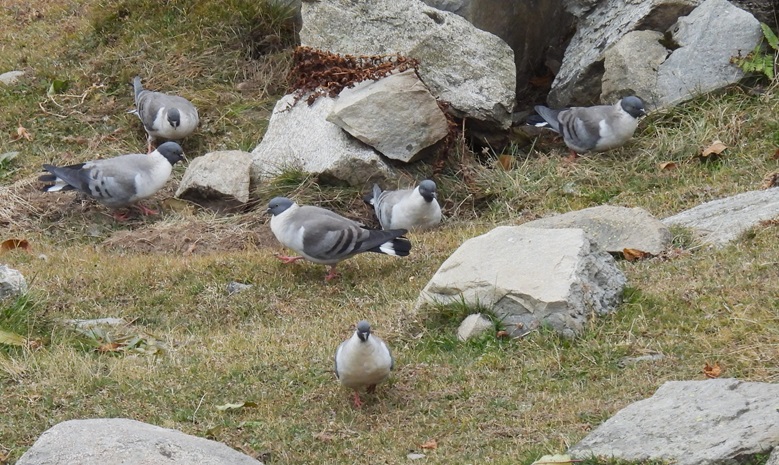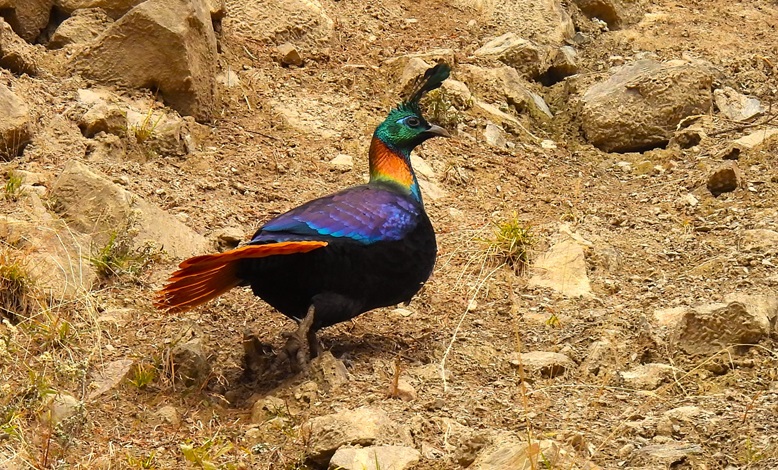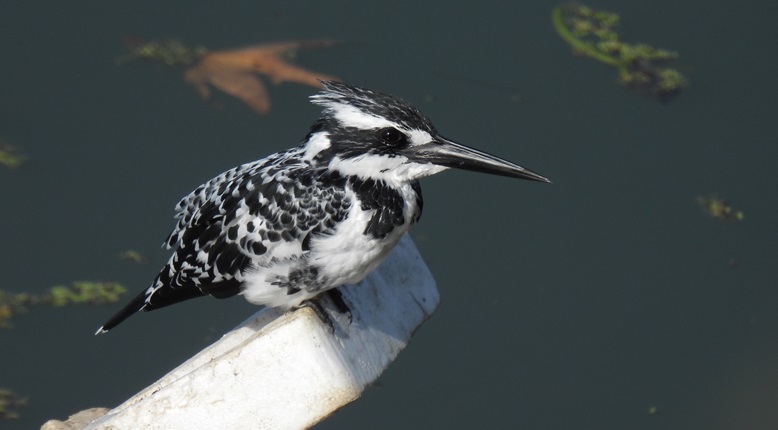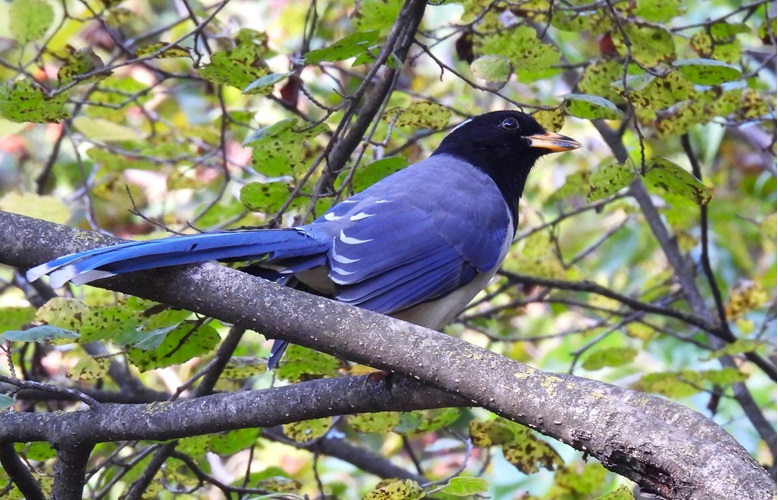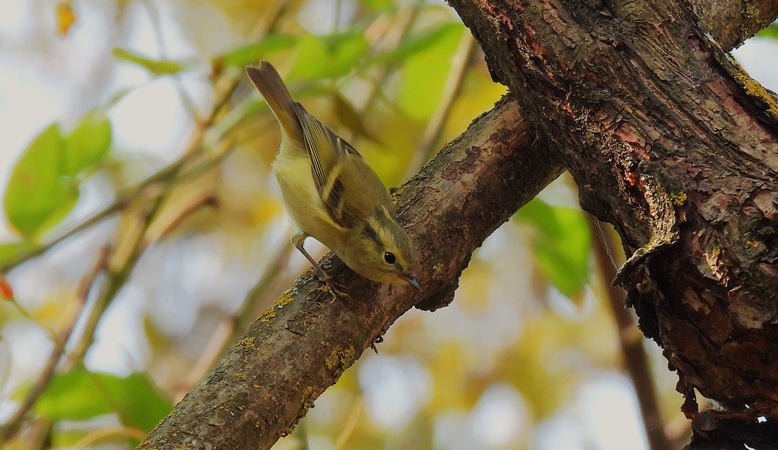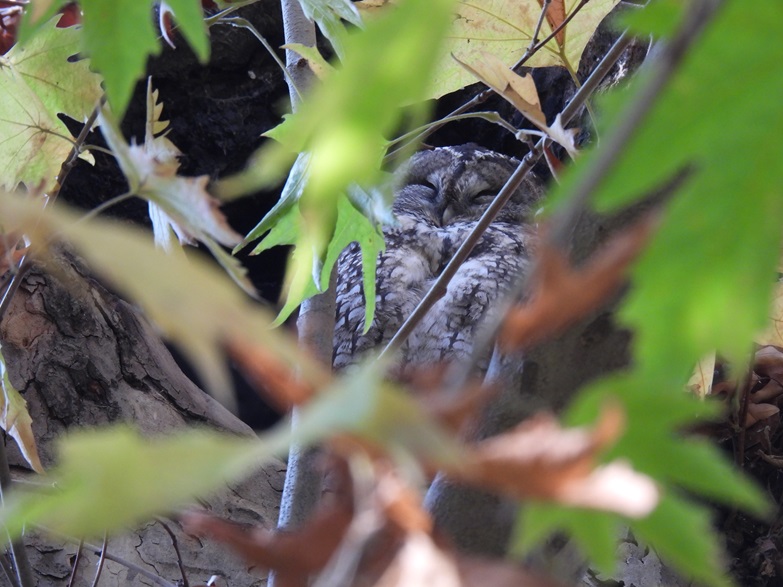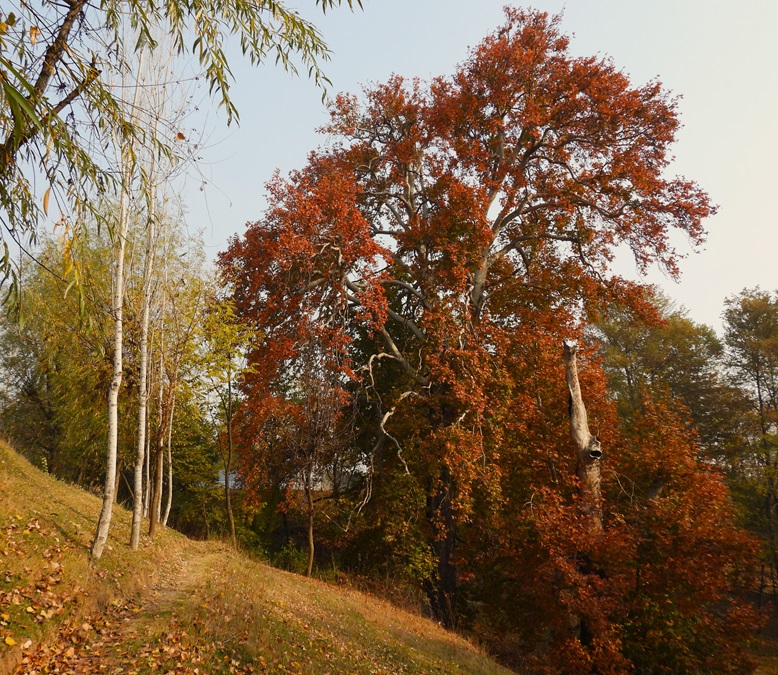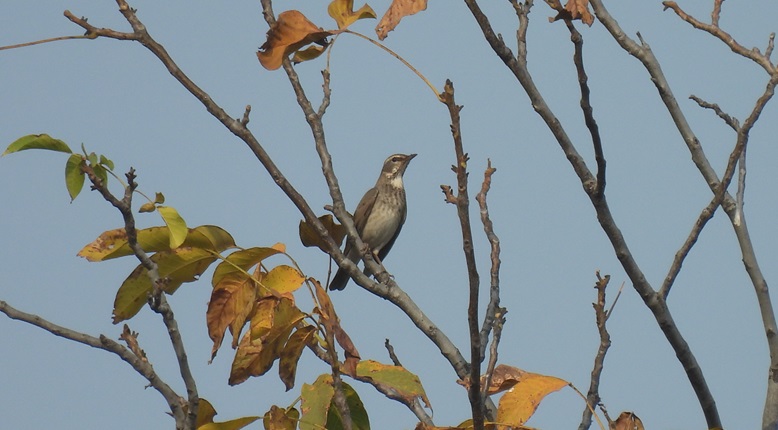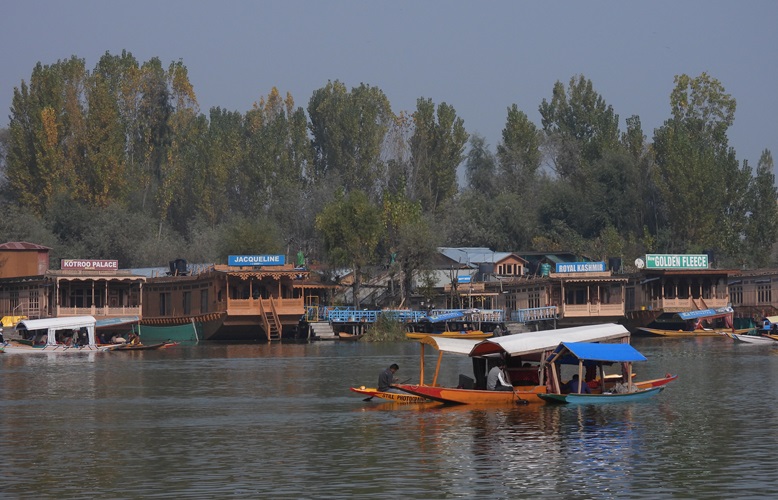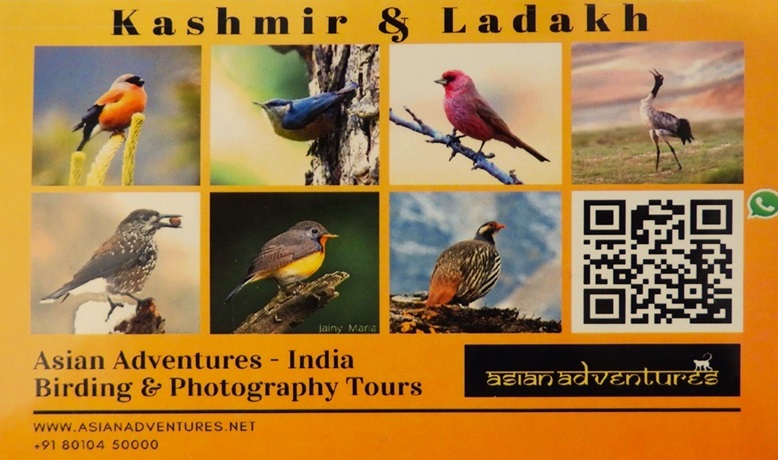Birding Kashmir, India - 20234 July 2024 | Admin
If the Himalaya represents the crowning glory of Indian birding then surely Kashmir is the jewel in that crown. Located at a crossroads between the Palearctic and Indomalayan biogeographic realms it plays host to an interesting and varied mix of bird species. Furthermore it is blessed with stunning scenery and it’s impossible not to be captivated by the clean mountain air, beautiful vistas and friendly people. Following a successful visit the previous year, I decided to return to Kashmir with Deepak Kumar for a few days before heading for a birding tour of north-east India. This time we would be birding in some new areas at a different time of the year. The previous visit was in June but now it was late October so we were hopeful of finding some winter visitors and may be a few late passage migrants. The first three days were centred around the Daksum Valley, a stunningly beautiful area approximately three hours drive south-east of Srinagar. As we headed south along National Highway 44 we were soon seeing some great birds including a European Roller on roadside wires. Kashmir is the only area of India where the species nest and given this bird was in exactly the same spot where we saw one in June the previous year it was tempting to speculate it was the same individual. However, given that it was also the last day of October it may just have been a coincidence and was a passage bird as this species often utilises roadside wires from which to hunt. A few miles further on we had equally good views of a Long-legged Buzzard.
European Roller near Pampore
Juvenile Long-legged Buzzard near Goripora Just before reaching Daksum the road runs alongside a small, fast flowing river and upon spotting a Brown Dipper from the vehicle we decided to pull over and take a closer look. This proved to be a good move, as by the time we left forty minutes later we had seen a total of four Brown Dippers, several White-capped Redstarts and Plumbeous Redstarts, two Crested Kingfishers, Blue Whistling Thrush and best of all, a very obliging Little Forktail! This can be a difficult species to find as during the nesting season they favour steep, deeply forged ravines that form rushing torrents of water where they feed amongst large boulders.
The Bringhi River at Daksum
Little Forktail at Daksum The following day we headed further up the valley beyond Daksum towards Sinthan Pass and waited until 9am for the road ahead to open as it is checked for rock falls at this time of year. While we waited there was plenty of birds to keep us entertained including Bar-tailed Treecreeper, White-cheeked Nuthatch, Yellow-billed Blue Magpie, Scaly-bellied, Himalayan and Brown-fronted Woodpeckers, Hume’s Leaf and Lemon-rumped Warblers, Rufous-naped Tit, Common Myna, Rock Bunting, Oriental Turtle Dove, Streaked Laughingthrush, Himalayan Bulbul and Large-billed Crow.
Scaly-bellied Woodpecker at Daksum
The road leading to Sinthan Pass and Sinthan Pass 'selfie point' Sinthan Pass lies at an elevation of 11000ft and the landscape here is less wooded with open rocky areas. Here we saw good numbers of Blue-fronted Redstarts, a single Blue-capped Redstart, Rufous-naped Tit, Eurasian Wren, Himalayan Buzzard, 15 Black-throated Thrushes, a few flocks of Plain Mountain Finch and European Goldfinch, two Black-throated Accentors and a male White-winged Grosbeak. Following a very successful mornings birding we headed back down towards Daksum for lunch and around the restaurant saw our first two Kashmir Nutcrackers of the trip.
Black-throated Accentor at Sinthan Pass
Red Fox at Sinthan Pass The remainder of afternoon was spent at Rajparian Wildlife Sanctuary where we saw Bar-tailed Treecreeper, White-cheeked Nuthatch, Coal Tit, Rufous-naped Tit, Himalayan Bluetail, Hume’s Leaf Warbler, Lemon-rumped Warblers, Kashmir Nutcrackers and best of all, a couple of Kashmir Langurs, a rare and very range restricted primate.
Kashmir Langur at Rajparian Wildlife Sanctuary The following day we headed back up to Sinthan Pass and saw a similar range of species as the previous day although additions for the trip included Variegated Laughingthrushes, Goldcrest, 60 Brambling, Mistle Thrush and a flock of Snow Pigeons that were unexpected but very welcome. However, it was the descent back towards Daksum that provided the biggest surprise in every sense – a wonderful male Himalayan Monal right by the side of the road! They’re distributed throughout the Himalaya, ranking as one of the most spectacular birds in all of India and due to the intense and varied colouring of the plumage they are also known as the ‘nine-coloured bird’. A little further down the road as we headed back towards Srinagar we stopped for lunch and noted four Himalayan Vultures migrating south.
Snow Pigeons at Sinthan Pass
Male Himalayan Monal near Sinthan Pass The following day we set off early for Wular Lake, around 1.5 hours drive north of Srinagar. We only had a few hours to explore a small area of this huge wetland, one of the largest in South Asia. It was foggy when we arrived but we managed to locate good numbers of Water Pipits and one or two Rosy Pipits along with a few Siberian Chiffchaffs. There were plenty of Mallards, Purple Swamphens and vast numbers of Common Coot on the larger open areas of water. A few Green Sandpipers fed around the muddy margins along with Citrine and White Wagtails while Pied, White-throated and Common Kingfishers were seen frequently. Water Pipit at Wular Lake
Pied Kingfisher at Wular Lake It was then time to head to Dachigam National Park which we visited the previous year and one of my favourite birding locations in Kashmir. It’s a pristine wilderness covering a vast area and although it’s only possible to cover a small fraction of the park in the time available, it’s always worth a visit. We were accompanied by a forest guard who led us up to the same watch tower we visited last year. This incredible vantage point offers stunning views up and down the valley. During the walk to and from the watch tower we encountered plenty of birds including good numbers of Yellow-billed Blue Magpies, Black Bulbuls and Lemon-rumped Warblers, along with Brown-fronted and Himalayan Woodpeckers, a few Coal, Cinereous and Green-backed Tits, a Hume’s Leaf Warbler, a Grey-hooded Warbler and a Spotted Forktail briefly.
Yellow-billed Blue Magpie at Dachigam National Park
Lemon-rumped Warbler at Dachigam National Park During our last morning in Kashmir we embarked upon an owl quest. Tawny Owl has a very limited range in India and only occurs in Kashmir. While it would be a new owl for my India list I was also keen to see one here because they are largely grey in plumage and quite distinctive from the birds we normally see in Britain. After much searching we located a Chinar, a species of tree native to this part of western Asia that are often favoured by Tawny Owls and thankfully we located one roosting in a hollow high above our vantage point. While searching for the owl we also saw Himalayan Buzzard, Himalayan Bulbul, Yellow-billed Blue Magpie, Black-throated Thrush and Hume’s Leaf Warbler.
Tawny Owl near Srinagar
This majestic Chinar tree looking resplendent in its autumn colours - home to the Tawny Owl above
Black-throated Thrush near Srinagar Our last birding location was Shankaracharya Hill on the edge of Srinagar. This was somewhere we had visited the previous summer as it offers a good opportunity to see Kashmir Flycatcher but by early November this species has long departed. But there was still a good selection of commoner birds to enjoy including Bar-tailed Treecreeper, Cinereous Tit, Himalayan Bluetail, Lemon-rumped Warblers and Yellow-billed Blue Magpie while the views across the city of Srinagar and the adjacent Dal Lake are worth the hike to the summit. But sadly the time had come to bid farewell to Deepak and head to the airport for the return flight to Delhi. If you’ve never visited Kashmir before, and very few non-Indian birders have, then I recommend it highly. Kashmir is now far safer than it was during the 1990s and 2000s, becoming hugely popular with Indian tourists once again. But due to outdated Foreign Office advice, it would be prudent to check your insurance policy even though this beautiful corner of India is infinitely safer than many areas of the United States! As an example, on one occasion at Sinthan Pass I forgot my scope having left it on the back seat of our vehicle. I mentioned this to our driver and he assured me there was no cause for concern. He explained that even if the scope and tripod were left unattended by the side of the road it would still be there when we returned. We didn’t have the time or inclination to put this to the test but I had no reason to disbelieve him. During my time birding in neighbouring Ladakh the previous year it was perfectly normal for us to leave the vehicle unattended and unlocked with all our gear on show when we stopped for a meal. As the driver explained then, there is a completely different mindset here and it wouldn’t occur to people to enter a vehicle and remove the contents. This is in stark contrast to Britain where birders’ cars are broken in to even when they are locked and nothing is on show! I’d like to take this opportunity to thank Deepak for yet another successful tour of Kashmir and also to Bilal, our driver, who was great company, interested in the birds we were seeing and most crucially, a skilled and safe driver.
Dal Lake with the famous Shikara wooden boats and house boats beyond |
|
